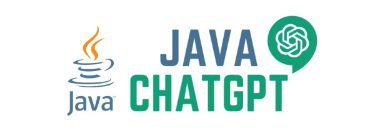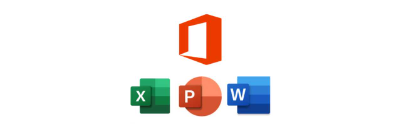Is the worst over for banking stocks? Check these 4 banks with good one-year upside potential Even as the December quarter saw muted performance due to increased provisioning requirements and moderation in loan growth, experts are hopeful that stocks of some banks, such as Axis, ICICI, HDFC, and others, might still have some upside potential for investors
Intense volatility has hit nearly all segments of the market since October last year, with the banking sector being no exception. Of the 41 listed banking stocks, 35 delivered negative returns, with 18 losing more than 15%. Moreover, 23 stocks registered returns lower than the Nifty 50 index. The analysis is based on the returns calculated using closing values between 26 September 2024 and 30 January 2025. The Nifty 50 index hit an all-time closing high on 26 September 2024.Budget with ET
Tax calculator
The intensity of the price decline can be gauged by comparing current prices with their 52-week low prices. Nearly 17 banking stocks (or 41.4% of 41 stocks) are currently trading within the 10% range of their respective 52-week low prices. Moderation in deposit growth, deterioration in credit quality of MFI and unsecured retail books, NIM compression due to declining share of low-cost CASA deposits and elevated credit costs are some headwinds that are exerting pressure.December quarter
Quarterly preview reports from multiple brokerages, including DAM Capital, Prabhudas Lilladher, PhillipCapital, Systematix, Centrum Broking and Nirmal Bang expect banks to report muted performance in the third quarter of 2024-25. The performance will be impacted by an increase in the provisioning requirements amid elevated slippages, moderation in loan growth due to lower offtake in the unsecured segment, increase in opex costs, muted treasury gains and pressure on yields due to adverse mix on both assets and liabilities. While the asset mix is weakening due to lower unsecured disbursements and higher low-yielding wholesale loans, weak CASA growth is creating an adverse liability mix.The concerns are reflected in the results declared so far. Of the 22 banks that had declared December quarter results by 30 January, for 18 banks, Reuters-Refinitiv has compiled earnings estimates of at least two analysts. Nearly 10 of these 18 banks have missed PAT estimates.
The near-term outlook for the banking space remains challenging. “We do not see much respite in earnings.
The banking sector systemic growth is likely to settle at 11-12% for 2024-25, meaningfully lower than the 15-16% growth seen a few quarters back,” says Dnyanada Vaidya, Research Analyst, BFSI, Axis Securities.
Medium-term outlook
Experts have maintained a cautious outlook for the banking sector due to concerns about asset quality. Apart from MFI and unsecured books, there are concerns that asset quality may weaken in other segments. Mohit Khanna, Fund Manager, Purnartha PMS, fears that the credit quality of other segments like 2W and commercial vehicles could also slip if the interest rate cut is delayed for a longer period.An Elara Capital report released in the second week of January indicates the possibility of contagion risk in retail loans. Multiple loans availed of by personal loan and credit card borrowers, lower income customer base exposure to unsecured segments, and retail loans to MFI borrowers (delinquency is higher for borrowers with MFI and retail overlap) warrant a point of caution. The risks are also accentuated as credit flow to these borrowers is currently restricted by banks, adds the Elara report.
The PSU banks are better placed in terms of NPA management. Trivesh D., COO, Tradejini, believes that the regulatory scrutiny and prompt corrective action framework have contributed to the improved NPA management of PSU banks. On the other hand, private sector banks are facing pressure from potential NIM compression due to aggressive unsecured retail lending. He says that small finance banks are most vulnerable to asset quality issues in the retail segment and fluctuations in interest rates.
Analysts have highlighted liquidity pressures amid a high loan-to-deposit ratio, which is close to 80%. Historically, Indian banks have operated within an LDR range of 70-75%, with a long-term average of around 75%, according to data compiled from an Asian Markets Securities report (released in December 2024). “The strain on liquidity has prompted a deceleration in credit growth in recent months as banks prioritise improving their stretched LDRs,” states the report. A higher LDR also puts NIMs at risk. Anchal Kansal, Senior Research Analyst at Green Portfolio PMS, says that a high loan-to-deposit ratio indicates potential risks to liquidity and profitability for banks, necessitating caution. This is because to maintain liquidity, the banks are forced to offer higher interest rates to attract deposits, which, in turn, squeezes their NIMs.
Sectoral revival prospects
Despite the near-term headwinds, there is optimism of performance improvement as macros stabilise, asset quality challenges ease and the pace of deposit accretion improves. Sahil Shah, MD and Chief Investment Officer, Equirus, believes that the stress in the MFI segment may peak in the second half of 2024-25 as some lenders have started guiding for better collection efficiency in recent months. The asset quality is better in secured retail and corporate segments, which, coupled with likely improvement in system liquidity, will support sector revival in the future.A Jefferies report suggests that pressure on unsecured retail loans will ease in 2025-26, as provisions for stress are taken upfront and disbursals slow. This could boost earnings for banks. The report also highlights factors such as opex controls, selective capital needs of PSU banks, focus on productivity, and RBI risk management efforts as key supports for banks in 2025.
Most banks are trading at valuations that are at a discount to their historical averages. Analysts believe the worst is priced into the lending stocks and with valuations at discount and, in some cases, at a significant discount. Vaidya prefers banks with a favourable product mix with a higher share of secured loans and reasonable valuations. The Asian Markets Securities report believes large private banks remain well-positioned to capture higher loans and deposit market share due to strong liability franchisee. The book values also appear more reliable than in prior phases of the asset quality cycle.
ET Wealth analysed the prospects of four banking stocks that are strongly favoured by analysts and are currently offering a decent one-year upside share price potential.
HDFC Bank
THE BANK’S NET PROFIT reported a 2.2% year-onyear growth and broadly met analysts’ estimates in the December 2024 quarter. The growth was impacted by a sharp moderation in the loan growth that grew by 3% y-o-y. The bank’s efforts to bring down its loan-to-deposit ratio contributed to the decline in credit growth. However, higher yields on investments helped NII growth surpass the loan growth on a sequential basis.
On the other hand, deposits grew by 15.8% y-o-y, led by term deposits. Though CASA share declined, the management expects it to improve after the rate cut. The asset quality deteriorated marginally due to slippages in agricultural loans. However, it is not facing any major asset quality challenges.

Moreover, the return ratios are likely to improve as the opex is expected to remain modest. A recent Axis Securities report states that the HDFC bank is an outlier among banks because of its strong asset quality performance, given the rising stress, especially in the unsecured segment. The report states that there are adequate levers to improve NIMs and lists factors such as controlled opex growth, improving productivity ensuring cost ratio moderation, pristine asset quality ensuring controlled credit, merger synergies and likely improvement in RoA as key strongholds.

ICICI Bank
IT REPORTED A STRONG operating performance in the December 2024 quarter with 15% y-o-y growth in PAT. The net profit exceeded Reuters-Refinitiv estimates by 2.6% and the performance was aided by lower credit costs and controlled provisions. Moreover, the loan growth of 13.9% y-o-y was industry-leading, supported by a healthy growth in business banking and corporate book.
The deposit growth followed industry trends with 14% y-o-y growth accompanied by a marginal drop in the CASA ratio. The CASA ratio remained stable and healthy at 40.5%. The bank also enjoys strong productivity gains and cost controls due to its investment in technology. The asset quality continues to remain strong at times when the sector is facing rising delinquencies in unsecured books. The management aims to remain vigilant on unsecured loans and its credit growth is expected to be driven by secured retail and corporate loans. Moreover, it is taking steps to strengthen its underwriting process and maintaining strong contingent buffers to manage stress in the unsecured segments. A report from Emkay states that the recent correction offers a buying opportunity and lists its superior RoAs, management credibility and strong capital buffers as key strongholds.


Axis Bank
IT REPORTED A SOFT performance in the December 2024 quarter, with PAT missing Reuters-Refinitiv estimates by 3.3%. Higher credit costs, weak deposit growth, muted credit growth and higher slippages impacted the performance during the quarter. While the loan growth of 9% y-o-y was below industry growth amid a slowdown in retail (including unsecured) and corporate books, the deposit growth of 9% y-o-y also trailed industry growth due to a fall in the CASA ratio.
The asset quality also weakened, with a jump in slippages from unsecured retail loans like PL, credit cards and microfinance. However, the bank has maintained reasonable buffers, which provide comfort.

Most brokerages have reduced their target prices due to the weak December quarter results and near-term uncertainty in the sector. However, the majority have a buy rating as the recent price correction has made its valuations attractive and there is a limited downside risk from the current levels. A recent report from BNP Paribas states that the bank is poised to capture a meaningful market share during the credit upcycle over the next few years, thanks to its provisioning and capital buffers, commitment to gaining a digital/technological competitive edge, and willingness to grow businesses, such as rural and small business banking, which broaden its loan growth potential.

Federal Bank
THE BANK’S PAT MISSED Reuters-Refinitiv estimates by 8.5% in the December 2024 quarter amid accelerated provisions and margin compression. The advances grew by 16% y-o-y and were constrained by deposit growth, which registered 11% y-o-y growth. The deposit growth was impacted by the bank’s strategy of focusing on granular retail deposit growth instead of high-value, expensive deposits.
The asset quality was steady despite a sequential jump in the slippage ratio in both wholesale and retail segments. Higher recovery and upgrades and higher write-offs led to a sequential improvement in GNPA and NNPA ratios. The management aims at medium-risk segments as opposed to high-yield, high-risk segments as part of its growth strategy. It aims to grow its advances at 1.5 times that of the industry in the medium term. On the deposit side, the focus is on improving the CASA ratio, which will help sustain NIMs.

Analysts believe that the bank’s provisions will safeguard it from unfavourable events. A recent Systematix report lists asset mix optimisation with a focus on higher yielding cohorts within secured segments, deposit mix optimisation with improved CASA deposits and pivoting from floating rate to fixed rate in certain portfolios, such as auto loans and business banking as future margin levers.

This story originally appeared on: India Times - Author:Faqs of Insurances


























































